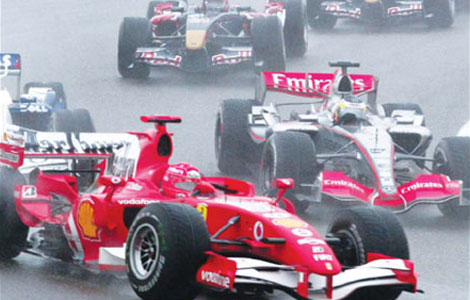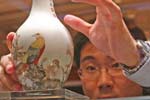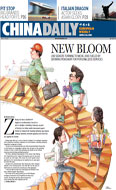Society
Expanding subways ease crowded roads
Updated: 2011-04-10 07:30
By David Cohen (China Daily)
"Don't put your expectations too high, no way the problem can be solved in a few years," he says. "People will suffer, even as we fix the problem, and have to change their lifestyle, for sure."
First on the list is reversing the trend toward driving to work.
Doing so, Zhou says, is more than just an engineering problem. In order to create new bike lanes or routes for bus rapid transit, a system that gives long-distance buses their own lanes in order to speed their travel though heavy traffic, planners will have to take room away from cars.
"Surface transportation is often political," he says. "Politically, decision-makers don't want to allocate surface to public use over private."
In the past year, the city of Beijing has begun trying to get cars off the roads, putting strict rules on car ownership and licensing. Residents without Beijing hukou or household registration are no longer allowed to drive their cars within the city limits.
Bus Rapid Transit (BRT) systems and programs to encourage bicycling have also been gaining traction in dozens of Chinese cities, says Karl Fjellstrom, a vice-director at the Institute for Transportation and Development Policy (ITDP), a multinational NGO that advises the city of Guangzhou on transportation issues.
Guangzhou's network of BRT lines and bicycle-sharing programs is serving as a model for Chinese cities struggling with traffic.
The key, experts said, was integration. The BRT lines carry 800,000 people a day. The city's bicycle-sharing system, Fjellstrom says, extends the reach of public transportation, allowing people who live farther from stations to get on board buses and trains quickly, and new tree-lined bicycle lanes help to make bicycles safe and appealing. Residents can take a bicycle with the swipe of a transport card and ride it free for an hour, returning it to another station.
The convenience of shared bicycles can draw commuters away from their cars.
According to a survey conducted by the ITDP, 75 percent of users on the bike-sharing system didn't use bicycles before the system opened.
Both concepts are spreading quickly in China. The World Bank has issued grants to 19 Chinese cities to build BRT networks, and Fjellstrom says his organization is advising dozens of other cities on starting similar programs. Hangzhou has already built the world's largest system, with 500,000 bikes collectively used nearly 2 million times a day.
Beijing has established four BRT lines, and Li says that more will open once plans have been completed to link lines to subway transfer stations.
Eventually, the experts interviewed all agreed: It will be possible for Beijing to overcome congestion through a combination of new technology and changing habits, encouraging the use of bicycles and public transit and encouraging employers to move to suburban office parks to diffuse the crush of commuters entering the city center.
"The new subway system is going outside, and that's basically the direction for the city," Li says.
E-paper

Green light
F1 sponsors expect lucrative returns from Shanghai pit stop
Buying into the romance
Born to fly
Light of hope
Specials

Share your China stories!
Foreign readers are invited to share your China stories.

No more Mr. Bad Guy
Italian actor plans to smash ‘foreign devil’ myth and become the first white kungfu star made in China.

Art auctions
China accounted for 33% of global fine art sales.
